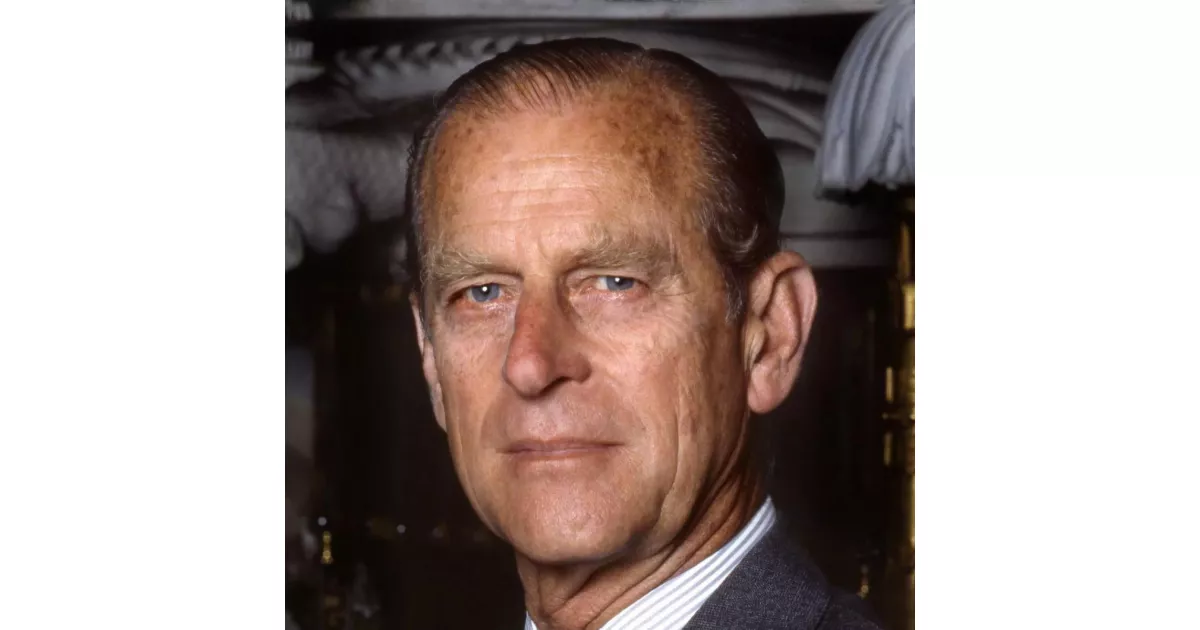An overview of the childhood and early education of Prince Philip, Duke of Edinburgh, highlighting the experiences that shaped the journey.
Prince Philip, Duke of Edinburgh, was the husband of Queen Elizabeth II and the longest-serving royal consort in British history, from 1952 until his death in 2021. His life was dedicated to supporting the Queen and the monarchy. He had a distinguished naval career and was known for his outspoken nature and commitment to various charitable causes, particularly those related to the environment, sports, and youth development, such as The Duke of Edinburgh's Award.
September 1922: King Constantine I Forced to Abdicate
In September 1922, King Constantine I, Philip's uncle and high commander of the Greek expeditionary force, was forced to abdicate due to significant losses in the war. Andrew, Philip's father, was arrested along with others, leading to his banishment from Greece.
1930: Philip Sent to Britain
In 1930, Philip was sent to Britain to live with his maternal grandmother at Kensington Palace and his uncle George Mountbatten, 2nd Marquess of Milford Haven, at Lynden Manor. He was then enrolled at Cheam School.
1933: Philip Attends Schule Schloss Salem
In 1933 Philip was sent to Schule Schloss Salem in Germany, which was owned by the family of his brother-in-law Berthold, Margrave of Baden.
1937: Death of Cecilie and Family in Air Crash
In 1937, Philip's sister Cecilie, her husband Georg Donatus, their two sons, and Georg Donatus's mother were killed in an air crash at Ostend. Philip attended the funeral in Darmstadt.
1939: Philip Joins Royal Navy
After leaving Gordonstoun in early 1939, Philip completed a term as a cadet at the Royal Naval College, Dartmouth, then repatriated to Greece, living with his mother in Athens for a month in mid-1939. At the behest of King George II of Greece, he returned to Britain in September to resume training for the Royal Navy.
1939: Royal Visit to Dartmouth and Renewed Acquaintance
In 1939, during King George VI and Queen Elizabeth's tour of the Royal Naval College, Dartmouth, Philip was asked to escort the royal couple's daughters, Elizabeth and Margaret. Elizabeth fell in love with Philip and they began exchanging letters.
1946: King Grants Permission to Marry
In 1946, King George VI granted Philip permission to marry Elizabeth, then aged 20.
1946: Philip Asks for Elizabeth's Hand in Marriage
In the summer of 1946, Philip asked George VI for his daughter Elizabeth's hand in marriage. The King granted his request, but stipulated that any formal engagement be delayed until Elizabeth's 21st birthday in April.
March 1947: Philip Adopts Mountbatten Surname
By March 1947, Philip had adopted the surname Mountbatten from his mother's family and stopped using his Greek and Danish royal titles upon becoming a naturalised British subject.
July 1947: Official Engagement Announcement
In July 1947, the official announcement of Prince Philip's engagement to Elizabeth was made after he stopped using his Greek and Danish royal titles and adopted the surname Mountbatten.
July 1947: Engagement Announced
On 9 July 1947, the engagement between Philip and Elizabeth was announced to the public.
October 1947: Received into the Church of England
In October 1947, Philip was officially received into the Church of England by the Archbishop of Canterbury, Geoffrey Fisher.
November 1947: Marriage to Elizabeth and Bestowal of Titles
In November 1947, Philip married Elizabeth, was granted the style His Royal Highness, and was created Duke of Edinburgh, Earl of Merioneth, and Baron Greenwich.
November 1947: Bestowal of Royal Highness and Dukedom
On the morning of his wedding, 20 November 1947, Philip was made the Duke of Edinburgh, Earl of Merioneth, and Baron Greenwich of Greenwich in the County of London. The day before, the King bestowed the style of Royal Highness on Philip.
July 1948: Introduction to the House of Lords
On 21 July 1948, Philip was introduced to the House of Lords, immediately before his uncle Louis Mountbatten.
November 1948: Birth of Prince Charles
In November 1948, Philip and Elizabeth's first child, Prince Charles, was born.
1949: Friendship with Uffa Fox
In 1949, Prince Philip, a keen yachtsman, formed a friendship with boat designer and sailing enthusiast Uffa Fox in Cowes.
August 1950: Birth of Princess Anne
In August 1950, Philip and Elizabeth's second child, Princess Anne, was born.
November 1951: Appointment to the Privy Council
In November 1951, Elizabeth and Philip were both appointed to the Privy Council after touring Canada.
January 1952: Commonwealth Tour
At the end of January 1952, Elizabeth and Philip set out on a tour of the Commonwealth.
February 1952: Elizabeth Becomes Queen
In February 1952, while in Kenya, Elizabeth's father died, and she became queen. Philip broke the news to her, and they returned to the United Kingdom.
December 1952: Initiation into Freemasonry
In December 1952, Philip was initiated into Freemasonry by the Worshipful Master of Navy Lodge No 2612, honouring a commitment to George VI.
1952: Elizabeth's Accession to the Throne
Before Elizabeth's accession in 1952, Philip and Elizabeth had two children: Prince Charles and Princess Anne.
1952: Patron of the Royal Society of Arts
From 1952, Prince Philip was the patron of the Royal Society of Arts until 2011.
1952: Philip Leaves Active Military Service
In 1952, Philip left active military service, having reached the rank of commander, when Elizabeth ascended the throne.
1952: First Airborne Flying Lesson
In 1952, Prince Philip had his first airborne flying lesson, marking the beginning of his career as a pilot.
1953: Parliament Passes Regency Bill
In 1953, Parliament passed a bill ensuring that Philip would serve as regent for their son Charles in the event of Elizabeth's unexpected death.
1953: Coronation Commission Chairman
In 1953, as chairman of the Coronation Commission, Philip was the first royal family member to fly in a helicopter, visiting troops for the ceremony. He swore to be Elizabeth's "liege man of life and limb" during the coronation service.
1954: Commonwealth Tour
In 1954, Philip and Elizabeth continued their tour of the Commonwealth, leaving their children in Britain.
1956: Founding of The Duke of Edinburgh's Award
In 1956, Philip and Kurt Hahn founded The Duke of Edinburgh's Award and he established the Commonwealth Study Conferences. In the same year, he opened the 1956 Summer Olympics in Melbourne and visited the Antarctic during a world tour.
1957: Made a British Prince
In 1957, Elizabeth formally issued letters patent making Philip a British prince.
1957: World Tour Aboard HMY Britannia
In 1957, Philip traveled the world aboard the newly commissioned HMY Britannia, opening the 1956 Summer Olympics in Melbourne and visiting the Antarctic.
February 1960: Order in Council on Surname
In February 1960, the Queen issued an Order in Council declaring that Mountbatten-Windsor would be the surname of the couple's male-line descendants.
1960: Initiation as Honorary Ovate
In 1960, Philip attended the National Eisteddfod of Wales, wearing a long green robe, and was initiated as an Honorary Ovate by the Archdruid of Wales, Edgar Phillips.
1960: Coining of "Dontopedalogy"
In 1960, during an address to the General Dental Council, Prince Philip jokingly coined the word "dontopedalogy" to describe the science of putting one's foot in one's mouth, a science he claimed to have practiced for many years.
1961: First Royal Family Member Interviewed on Television
In 1961, Philip became the first member of the royal family to be interviewed on television, appearing on Panorama to discuss the Commonwealth Technical Training Week.
1962: Flying Tour of South America
In 1962, Prince Philip undertook a two-month flying tour of South America, with Captain Peter Middleton (grandfather of Catherine, Princess of Wales) as his co-pilot.
March 1964: Birth of Prince Edward
In March 1964, Elizabeth and Philip's fourth child, Prince Edward, was born.
1969: Appearance on Meet the Press
In 1969, Philip made an appearance on Meet the Press during a tour of North America.
1969: Views on Republicanism in Canada
While in Canada in 1969, Philip spoke about his views on republicanism.
1971: Switch to Carriage Driving
In 1971, Prince Philip stopped playing polo and began competing in carriage driving, a sport he helped expand. He also oversaw the drafting of the sport's early rule book.
1976: Conversation with White House Butlers
During a visit to the White House in 1976, Prince Philip engaged a White House butler and a fellow butler in conversation and poured them drinks, demonstrating his down-to-earth manner.
1986: "Slit-Eyed" Comment in China
During a state visit to China in 1986, Prince Philip joked to British students from Xi'an's Northwest University that if they stayed much longer, they would go "slit-eyed." Despite the British press portraying it as racially intolerant, Chinese authorities were reportedly unconcerned.
1992: Philip on Speaking Greek
In 1992, Philip stated that he "could understand a certain amount" of Greek, though he primarily thought of himself as Danish and spoke mostly English.
1993: Confirmation of Romanov Family Remains Identity
In 1993, scientists confirmed the identity of the remains of the Romanov family by comparing their mitochondrial DNA to living matrilineal relatives, including Prince Philip.
August 1997: Death of Diana
In August 1997, Diana was killed in a car crash in Paris. Philip was on holiday at Balmoral, and he and Elizabeth shielded their grandsons from press interest. Philip's counsel to Prince William was significant.
1999: Cessation of Membership in House of Lords
In 1999, Philip, his sons, and other royals ceased to be members of the House of Lords following the House of Lords Act 1999.
2000: Views on Longevity
In a 2000 interview, at age 79, Prince Philip expressed his dislike of living an extremely long life, stating he could not "imagine anything worse" and had "no desire whatsoever" to become a centenarian.
2008: Hospital Admission for Chest Infection
In 2008, Prince Philip was admitted to King Edward VII's Hospital in London for a chest infection. He walked into the hospital unaided and was discharged three days later after a quick recovery.
April 2009: Longest-Serving British Royal Consort
In April 2009, Prince Philip became the longest-serving British royal consort, surpassing Charlotte of Mecklenburg-Strelitz, who was the wife of George III.
June 2011: Slowing Down and New Title
In June 2011, during an interview for his 90th birthday, Prince Philip announced he would slow down and reduce his duties. For his 90th birthday, the Queen gave him the title Lord High Admiral.
December 2011: Hospitalization for Chest Pains
In December 2011, while staying at Sandringham House, Prince Philip experienced chest pains and was admitted to Papworth Hospital, Cambridgeshire. He underwent successful coronary angioplasty and stenting and was discharged a few days later.
2011: End of Patronage of the Royal Society of Arts
Prince Philip ended his patronage of the Royal Society of Arts in 2011, a role he held since 1952.
June 2012: Hospitalization During Diamond Jubilee
In June 2012, during celebrations for his wife's Diamond Jubilee, Prince Philip was taken from Windsor Castle to King Edward VII's Hospital due to a bladder infection. He was later discharged.
August 2012: Hospital Admission for Infection Recurrence
In August 2012, Prince Philip was admitted to Aberdeen Royal Infirmary for five nights as a precautionary measure after a recurrence of a bladder infection while staying at Balmoral Castle.
February 2013: Oldest-Ever Male British Royal
In February 2013, Prince Philip became the oldest-ever male British royal.
June 2013: Exploratory Abdominal Operation
In June 2013, Prince Philip was admitted to the London Clinic for an exploratory operation on his abdomen, spending 11 days in the hospital.
April 2014: Discovery of Newsreel Film
In April 2014, an old British Pathé newsreel film was discovered showing Prince Philip's 1962 two-month flying tour of South America. His co-pilot was Captain Peter Middleton, the grandfather of his granddaughter-in-law Catherine.
May 2014: Public Appearance with Bandage
In May 2014, Prince Philip appeared in public with a bandage on his right hand after undergoing a "minor procedure" at Buckingham Palace the preceding day.
June 2017: Hospital Admission for Infection
In June 2017, Prince Philip was taken from Windsor to London and admitted to King Edward VII's Hospital after being diagnosed with an infection, spending two nights there. He was unable to attend the State Opening of Parliament and Royal Ascot.
November 2017: 70th Wedding Anniversary
On 20 November 2017, Prince Philip and Queen Elizabeth celebrated their 70th wedding anniversary, making her the first British monarch to celebrate a platinum wedding anniversary.
2017: Retirement from Royal Duties
In 2017, at the age of 96, Philip retired from royal duties.
April 2018: Hip Replacement Surgery
In April 2018, Prince Philip was admitted to King Edward VII's Hospital for a planned hip replacement after missing the annual Maundy and Easter Sunday services. He was discharged the following day.
January 2019: Car Collision Near Sandringham Estate
In January 2019, Prince Philip was involved in a car collision near the Sandringham Estate. He was reported to be uninjured, but the occupants of the other car were injured and taken to hospital. He voluntarily surrendered his driving license three weeks later.
April 2019: Third-Longest-Lived Member of the British Royal Family
In April 2019, Prince Philip became the third-longest-lived member of the British royal family, following Princess Alice, Duchess of Gloucester, and Queen Elizabeth The Queen Mother.
April 2019: Driving on Private Estates
In April 2019, Prince Philip was seen driving around private estates, despite having surrendered his driving license following a car accident earlier that year.
May 2019: Last Public Appearance Before Hospitalization
In May 2019, Prince Philip made his last public appearance before being hospitalized in December, attending Lady Gabriella Windsor's wedding.
December 2019: Hospital Stay for Pre-existing Condition
In December 2019, Prince Philip stayed at King Edward VII's Hospital and received treatment for a "pre-existing condition," described by Buckingham Palace as a precautionary measure. He had not been seen in public since May 2019.
June 2020: Photo Released During COVID-19 Pandemic
In June 2020, a photo of Prince Philip and Queen Elizabeth isolating at Windsor Castle during the COVID-19 pandemic was released ahead of his 99th birthday.
January 2021: COVID-19 Vaccination
In January 2021, Prince Philip and Queen Elizabeth were vaccinated against COVID-19 by a household doctor at Windsor Castle.
February 2021: Hospital Admission and Treatment for Infection
In February 2021, Prince Philip was admitted to King Edward VII's Hospital as a "precautionary measure" after feeling unwell. He was visited by Prince Charles, and Buckingham Palace confirmed he was "responding to treatment" for an infection.
June 2021: Royal Collection Trust Exhibition: Prince Philip: A Celebration
In June 2021, to mark the centenary of Prince Philip's birth, the Royal Collection Trust held an exhibition at Windsor Castle and the Palace of Holyroodhouse. The exhibition, titled 'Prince Philip: A Celebration,' showcased around 150 personal items related to him.
Mentioned in this timeline
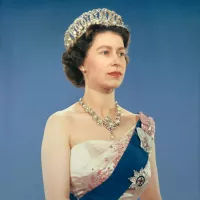
Elizabeth II reigned as Queen of the United Kingdom and...
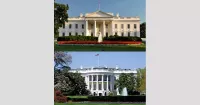
The White House located at Pennsylvania Avenue NW in Washington...
The Guardian is a British daily newspaper founded in as...
Germany officially the Federal Republic of Germany is a Western...
China officially the People's Republic of China PRC is an...
Australia officially the Commonwealth of Australia encompasses the Australian mainland...
Trending
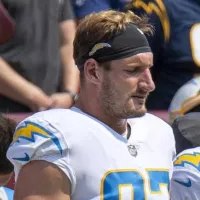
2 months ago Joey Bosa Lists Los Angeles Mansion for $3.7 Million Amid Bills Transition.
1 month ago Cowboys Defeat Eagles; Sirianni Disputes Barkley; Lurie Scrutinizes Coaching Staff After Loss
2 months ago Eagles Acquire Jaelan Phillips in Trade; Patriots Expressed Interest Before Deadline.

7 months ago Eagles' Saquon Barkley & Cooper DeJean Showcase Basketball Skills in Viral Moment
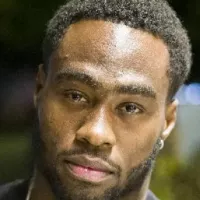
28 days ago Brandin Cooks joins Bills; WR Moore released after guaranteed $2.5 million contract.

7 months ago Mikaela Shiffrin Releases Final Episode of "Moving Right Along" Web Series
Popular

XXXTentacion born Jahseh Dwayne Ricardo Onfroy was a controversial yet...

Stranger Things created by the Duffer Brothers is a popular...
The Kennedy Center Honors are annual awards recognizing individuals and...
Turning Point USA TPUSA is an American nonprofit organization founded...

Candace Owens is an American conservative political commentator and author...

Bernie Sanders is a prominent American politician currently serving as...
